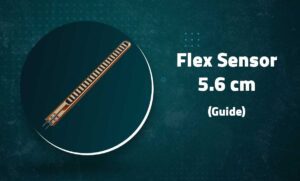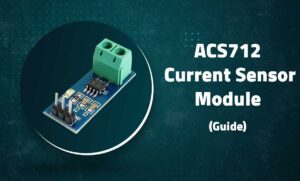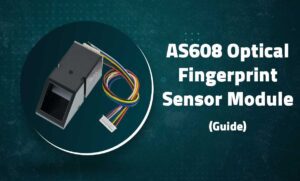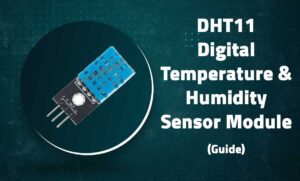TCS3200 Color Sensor Module
TCS3200 Color Sensor Module
Precise RGB Color Detection for Arduino and Embedded Projects
Introduction
The TCS3200 Color Sensor is a programmable color light-to-frequency converter that combines configurable silicon photodiodes and a current-to-frequency converter. It can detect and measure the intensity of red, green, blue, and white light, making it ideal for color sorting, ambient light sensing, and industrial automation applications.
 Key Features
Key Features
RGB Detection
Measures red, green, and blue light separately
Programmable
Adjustable output frequency scaling (2%, 20%, 100%)
Fast Response
High-frequency output up to 600kHz
Easy Integration
Works with 3.3V or 5V systems including Arduino
Technical Specifications
| Detection Range | 380nm-700nm (Visible Light Spectrum) |
|---|---|
| Photodiode Type | 16 photodiodes (4 red, 4 green, 4 blue, 4 clear) |
| Output Frequency | 0Hz to 600kHz |
| Supply Voltage | 2.7V – 5.5V DC |
| Current Consumption | ~2mA (typical) |
| Output Scaling | 2%, 20%, or 100% (programmable) |
| Operating Temperature | -40°C to +85°C |
Pin Configuration

| Pin | Label | Description | Arduino Connection |
|---|---|---|---|
| 1 | VCC | Power (3.3V or 5V) | 5V |
| 2 | GND | Ground | GND |
| 3 | S0 | Frequency scaling selection | D2 |
| 4 | S1 | Frequency scaling selection | D3 |
| 5 | S2 | Photodiode type selection | D4 |
| 6 | S3 | Photodiode type selection | D5 |
| 7 | OUT | Frequency output | D6 |
| 8 | OE | Output enable (active low, optional) | GND (if not used) |
Note: The sensor requires proper lighting conditions for accurate color detection
Wiring with Arduino
// Basic Connections: // VCC → 5V // GND → GND // S0 → D2 // S1 → D3 // S2 → D4 // S3 → D5 // OUT → D6 // OE → GND (if used) // For best results, use consistent lighting and calibrate with known colors
Important: Avoid direct sunlight as it may affect color readings
Basic Color Detection Example
// TCS3200 Color Sensor Basic Example
#define S0 2
#define S1 3
#define S2 4
#define S3 5
#define OUT 6
void setup() {
pinMode(S0, OUTPUT);
pinMode(S1, OUTPUT);
pinMode(S2, OUTPUT);
pinMode(S3, OUTPUT);
pinMode(OUT, INPUT);
// Set frequency scaling to 20%
digitalWrite(S0, HIGH);
digitalWrite(S1, LOW);
Serial.begin(9600);
}
void loop() {
// Read Red component
digitalWrite(S2, LOW);
digitalWrite(S3, LOW);
int red = pulseIn(OUT, LOW);
// Read Green component
digitalWrite(S2, HIGH);
digitalWrite(S3, HIGH);
int green = pulseIn(OUT, LOW);
// Read Blue component
digitalWrite(S2, LOW);
digitalWrite(S3, HIGH);
int blue = pulseIn(OUT, LOW);
Serial.print("R: "); Serial.print(red);
Serial.print(" G: "); Serial.print(green);
Serial.print(" B: "); Serial.println(blue);
delay(500);
}
Advanced Features
Frequency Scaling
// Set frequency scaling (S0, S1)
// 2% scaling (low power)
digitalWrite(S0, LOW);
digitalWrite(S1, HIGH);
// 20% scaling (recommended)
digitalWrite(S0, HIGH);
digitalWrite(S1, LOW);
// 100% scaling (maximum)
digitalWrite(S0, HIGH);
digitalWrite(S1, HIGH);Color Filter Selection
// Select photodiode type (S2, S3)
// Red filter
digitalWrite(S2, LOW);
digitalWrite(S3, LOW);
// Green filter
digitalWrite(S2, HIGH);
digitalWrite(S3, HIGH);
// Blue filter
digitalWrite(S2, LOW);
digitalWrite(S3, HIGH);
// No filter (clear)
digitalWrite(S2, HIGH);
digitalWrite(S3, LOW);Color Calibration
// Calibration with known colors
void calibrate() {
// Measure reference colors first
// Store reference values in EEPROM
// Compare new readings to references
}Color Identification
// Simple color identification
String getColorName(int r, int g, int b) {
if (r > g && r > b) return "Red";
if (g > r && g > b) return "Green";
if (b > r && b > g) return "Blue";
return "Unknown";
}Troubleshooting
Inconsistent Readings
- Ensure stable lighting conditions
- Calibrate with known reference colors
- Check for sensor saturation (too bright)
No Output
- Verify power connections (3.3V/5V)
- Check frequency scaling settings
- Ensure OE pin is properly connected
Color Inaccuracy
- Use diffused lighting to prevent glare
- Maintain consistent distance to objects
- Implement proper calibration routine
Related Posts
MG90S Mini Digital 180° Servo
MG90S Mini Digital 180° Servo
Metal Gear, 2.2kg·cm Torque for RC and Robotics
Introduction
The MG90S is a compact di...
XKC-Y25-V Non-Contact Water Liquid Level Sensor
XKC-Y25-V Non-Contact Water Liquid Level Sensor
Capacitive Detection Without Physical Contact
Introduction
The XKC-Y...
Waterproof Ultrasonic Obstacle Sensor, Sensor with Separate Probe
+
Waterproof Ultrasonic Obstacle Sensor
Distance Measurement with Separate Waterproof Probe
Introduction
The Wa...
Water Level Depth Detection Sensor
Water Level Depth Detection Sensor
Liquid Measurement for Arduino and IoT Projects
Introduction
The Water Level Dept...
VL53L0X Purple Laser Distance Sensor Module
VL53L0X Laser Distance Sensor Module
High-Speed, High-Precision Time-of-Flight Distance Measurement
Introduction
The...
TCS34725 RGB Color Sensor Module
TCS34725 RGB Color Sensor Module
High-Accuracy Digital Color Detection with IR Filter
Introduction
The TCS34725 is a...
PN532 NFC RFID Read/Write Module V3 Kit
PN532 NFC RFID Read/Write Module V3 Kit
Advanced Near Field Communication for Arduino and Embedded Systems
Introducti...
HC-SR501 PIR Motion Sensor Module
HC-SR501 PIR Motion Sensor Module
Passive Infrared Detection for Security and Automation Projects
Introduction
The H...
Flex Sensor 5.6 cm (Detect Bending Motion)
Flex Sensor 5.6cm
Bend Detection Sensor for Arduino and Wearable Electronics Projects
Introduction
The 5.6cm...
ACS712 Current Sensor Module
ACS712 5A Current Sensor Module
Hall-Effect Based AC/DC Current Measurement for Arduino Projects
Introduction
The AC...
AS608 Optical Fingerprint Sensor Module
AS608 Optical Fingerprint Sensor Module
High-Precision Biometric Recognition for Arduino and Microcontroller Projects
...
DHT11 Temperature and Humidity Sensor Module
DHT11 Temperature & Humidity Sensor
Basic Environmental Sensing with Status LED for Arduino Projects
Introduction...







Recent Comments